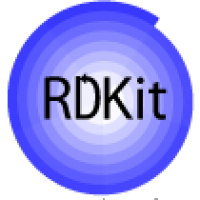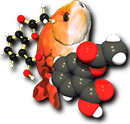About FormulationAI
Our group focus on integrating artificial intelligence and experiments to boost the study of drug formulation, including developing machine learning algorithm for drug formulation design, establishing drug formulation databases and computational platforms. These years we have published a series of highlight papers in this area, which laid a solid foundation for the birth of this platform.
Contact
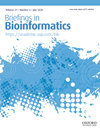
Dong J, Wu Z, Xu H L, et al. FormulationAI: a novel web-based platform for drug formulation design driven by artificial intelligence[J].
Briefings in Bioinformatics, 2023 Nov 22;25(1):bbad419. (IF: 13.99)
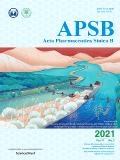
Wei W, Shuo F, Ye Z, et al. Prediction of lipid nanoparticles for mRNA vaccines by the machine learning algorithm[J].
Acta Pharmaceutica Sinica B, 2022, 12(6): 2950-2962. (IF: 14.90)

Jun L, Han G, Ye Z, et al. In silico formulation prediction of drug/cyclodextrin/polymer ternary complexes by machine learning and molecular modeling techniques[J].
Carbohydrate Polymers, 2022, 275: 118712.(IF: 10.72)
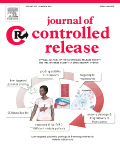
Wang W, Ye Z, Gao H, et al. Computational pharmaceutics - A new paradigm of drug delivery[J].
Journal of Controlled Release, 2021, 338: 119-136. (IF: 11.46)

Gao H, Jia H, Dong J, et al. Integrated in silico formulation design of self-emulsifying drug delivery systems[J].
Acta Pharmaceutica Sinica B, 2021, 11(11): 3585-3594. (IF: 14.90)
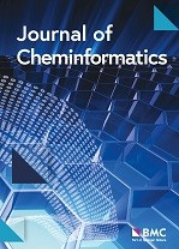
Ye Z, Defang Ouyang. Prediction of small-molecule compound solubility in organic solvents by machine learning algorithms[J].
Journal of Cheminformatics, 98(2021).(IF: 8.26)

Wang N, Sun H, Dong J. PharmDE: A new expert system for drug-excipient compatibility evaluation[J].
International Journal of Pharmaceutics,2021, 607(120962). (IF=6.51)

Wang N, Sun H, Dong J. PharmSD: A novel AI-based computational platform for solid dispersion formulation design[J].
International Journal of Pharmaceutics,2021, 604(120705). (IF=6.51)

He Y, Ye Z, Liu X, et al. Can machine learning predict drug nanocrystals?[J].
Journal of Controlled Release, 2020, 322: 274-285. (IF: 11.46)

Han R, Xiong H, Ye Z, et al. Predicting physical stability of solid dispersions by machine learning techniques[J].
Journal of Controlled Release, 2019, 311: 16-25. (IF: 11.46)

Zhao Q, Ye Z, Su Y, et al. Predicting complexation performance between cyclodextrins and guest molecules by integrated machine learning and molecular modeling techniques[J].
Acta Pharmaceutica Sinica B, 2019, 9(6): 1241-1252. (IF: 14.90)
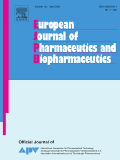
Gao H, Wang W, Dong J, et al. An integrated computational methodology with data-driven machine learning, molecular modeling and PBPK modeling to accelerate solid dispersion formulation design[J].
European Journal of Pharmaceutics and Biopharmaceutics, 2020, 158: 336-346.(IF: 5.59)

Yang Y, Ye Z, Su Y, et al. Deep learning for in vitro prediction of pharmaceutical formulations[J].
Acta pharmaceutica sinica B, 2019, 9(1): 177-185. (IF: 14.90)

Ma Y, Zhong L, Peng Z, et al. Development of a Highly Water-Soluble Lycopene Cyclodextrin Ternary Formulation by the Integrated Experimental and Modeling Techniques[J].
AAPS PharmSciTech, 2021, 22(1): 1-9. (IF: 4.02)

Yang Y, Ye Z, Su Y, et al. Deep learning for in vitro prediction of pharmaceutical formulations[J].
Acta pharmaceutica sinica B, 2019, 9(1): 177-185.(IF: 14.90)
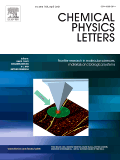
Gao H, Ye Z, Dong J, et al. Predicting drug/phospholipid complexation by the lightGBM method[J].
Chemical Physics Letters, 2020, 747: 137354. (IF: 2.72)

Ye Z, Yang Y, Li X, et al. An integrated transfer learning and multitask learning approach for pharmacokinetic parameter prediction[J].
Molecular pharmaceutics, 2018, 16(2): 533-541.(IF: 5.36)

Han R, Yang Y, Li X, et al. Predicting oral disintegrating tablet formulations by neural network techniques[J].
Asian journal of pharmaceutical sciences, 2018, 13(4): 336-342.(IF: 9.27)






